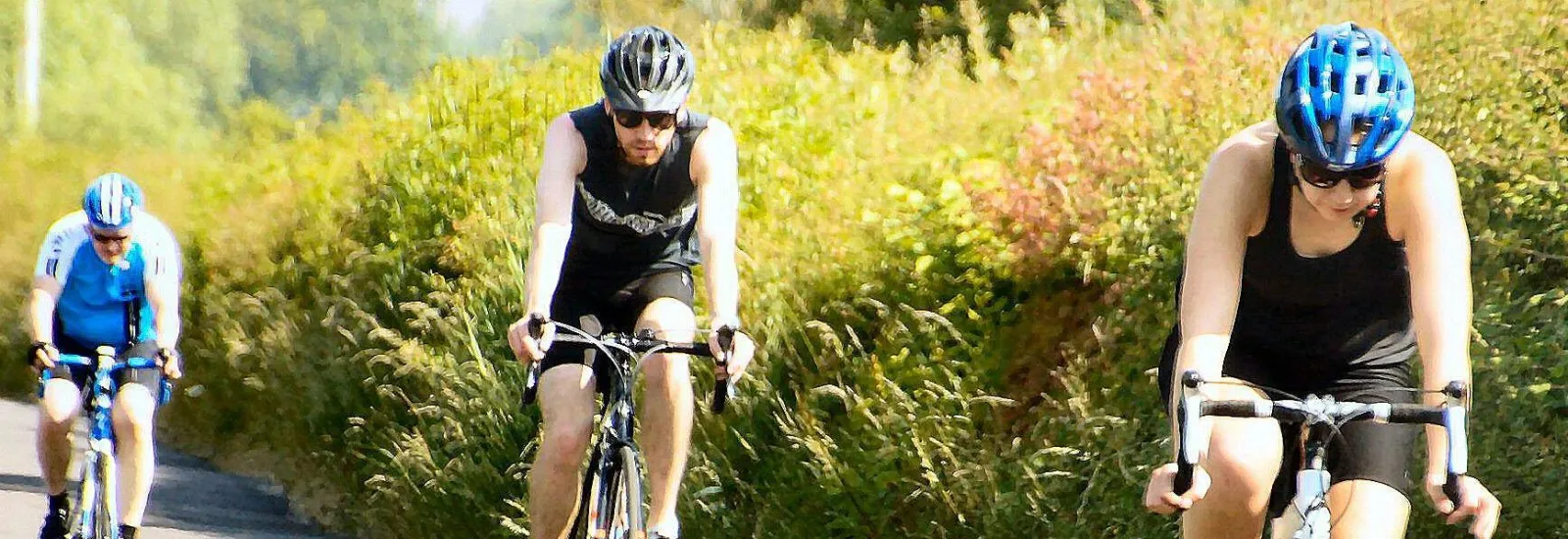
Ready to ride? Prioritize bike safety
 As soon as the weather warms up you might be tempted to hop on your bicycle and pedal out of the garage. Not so fast. You’ve got to give your bike and your routine a good once-over first. Here are some important bike safety tips to get you going.
As soon as the weather warms up you might be tempted to hop on your bicycle and pedal out of the garage. Not so fast. You’ve got to give your bike and your routine a good once-over first. Here are some important bike safety tips to get you going.
Check your helmet
Wearing a helmet is the best way to protect your head in case of a bicycle accident. According to the National Highway Traffic Safety Administration (NHTSA) all cyclists should wear a safety-certified well-fitting bicycle helmet every time they hit the road.
Before purchasing a new helmet measure for size with a soft tape measure around your head keeping it level above the eyebrows and ears the Centers for Disease Control and Prevention (CDC) explained. Always check a brand’s specific sizing instructions on the package or website before purchasing any new helmet. A helmet fits perfectly when there are no air spaces between any of the foam and the rider’s head.
If you’re using last year’s helmet check that the foam is intact and that the helmet isn’t warped or cracked by heat water or impact the CDC noted. Try it on to see if it still fits properly and if there’s any question or doubt replace the helmet.
Whether purchasing new or reusing a helmet check for a safety certification sticker from the U.S. Consumer Product Safety Commission (CPSC) which guarantees the helmet has been tested to meet a federal bike safety standard. While there may be other safety certification stickers the CPSC certification is the most important one the CDC explained.
Know the bike riders rules of the road
According to the NHTSA bicyclists are considered vehicle operators who need to follow basic rules of the road such as traffic signs signals and lanes. The safest place for bike riders is on the street except for children under 10 years old who should ride with you on a sidewalk.
On the street cyclists are required to ride on the right side of the road in the same direction as the traffic or you’re at risk for an accident or a ticket according to AAA.
Stay safe while riding
In addition to wearing your helmet the CDC advised wearing fluorescent clothing to make you more visible during daytime riding. Wearing retroreflective clothing or applying retroreflective tape reflectors or lights to your bike can all help make you more visible at night. Ask someone to test your overall visibility to motorists at different times of the day and at different distances.
Getting ready for this year’s ReidRide? In addition to these bike safety tips check your tires brakes chain and seat height to make sure your bike is in good riding order.
Image source: Morguefile


Just in time for reid ride next weekend!